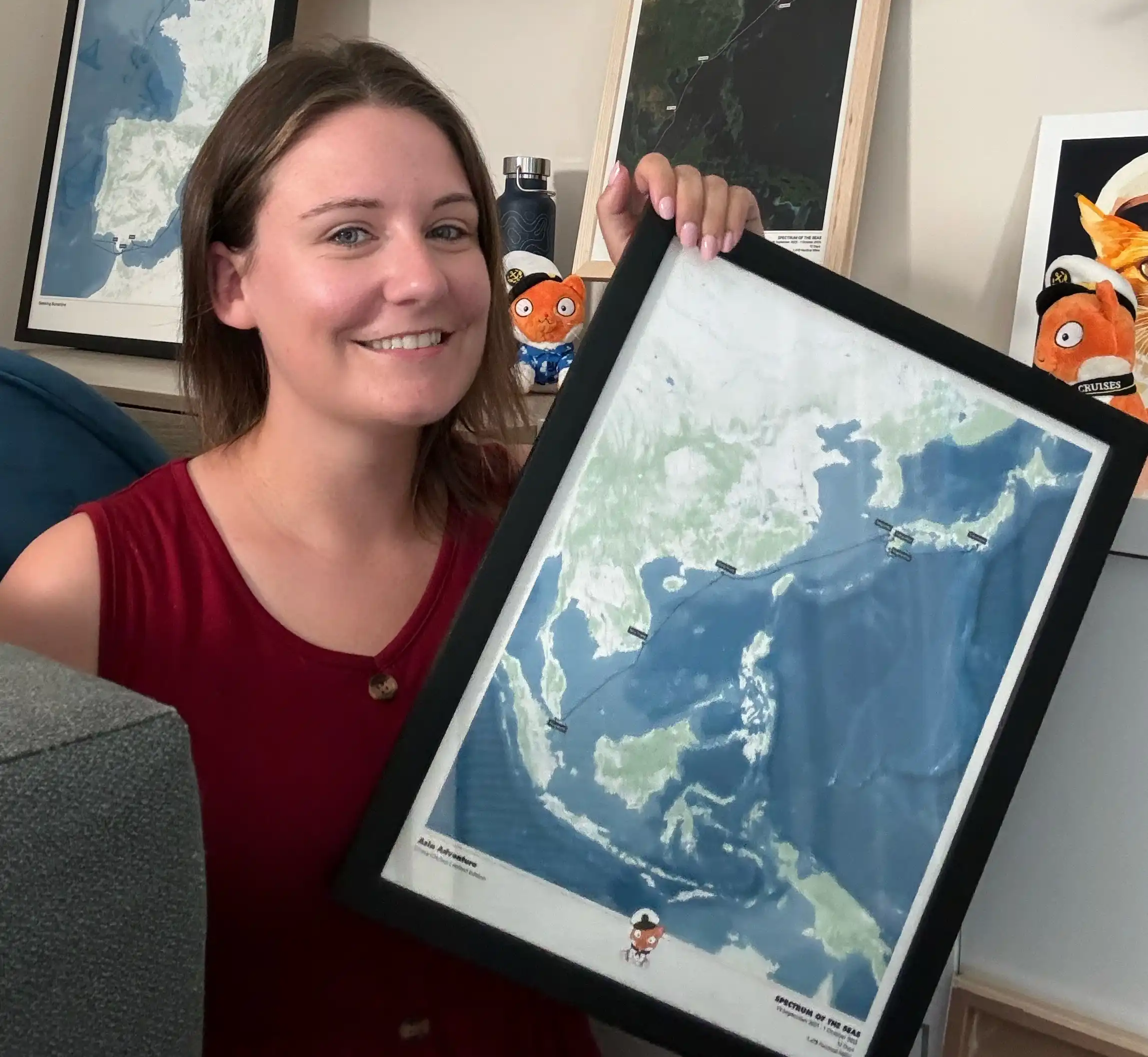So many people worry about getting seasick when they cruise. I do get seasick, but have only felt really ill on a handful of occasions. I certainly don’t go on a cruise expecting to feel rough!
I recently took a Transatlantic crossing on the world’s last Ocean Liner, Queen Mary 2, with my brother and my parents.
How important picking the destination you sail to was highlighted on this trip. Transatlantic sailings in winter are not a good choice for anyone who suffers from motion sickness!
Choose Your Cruise Destination Carefully
It would be best to focus on calm waters and sheltered itineraries wherever possible.
You would be sensible to do some research and look at typical weather conditions in that region for the time of year you are thinking of sailing.
Of course, you can never guarantee good weather in any destination. You may get storms in the Mediterranean or hurricanes or tropical storms in the Caribbean.
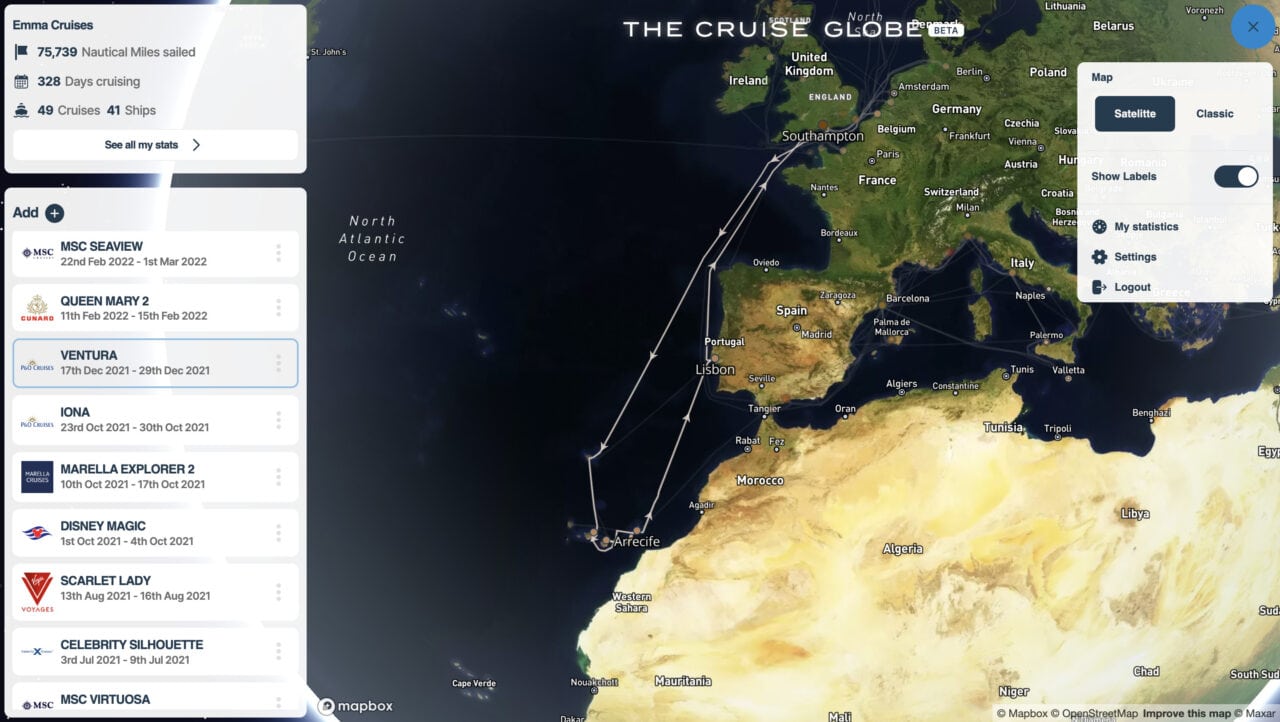
- The Caribbean
- Has warm, calm waters, especially in the eastern and western regions.
- Cruises have short distances between ports, reducing time spent at sea.
- Bahamas itineraries or Southern Caribbean routes may be a good option. The waters from Miami to the Bahamas are usually very calm.
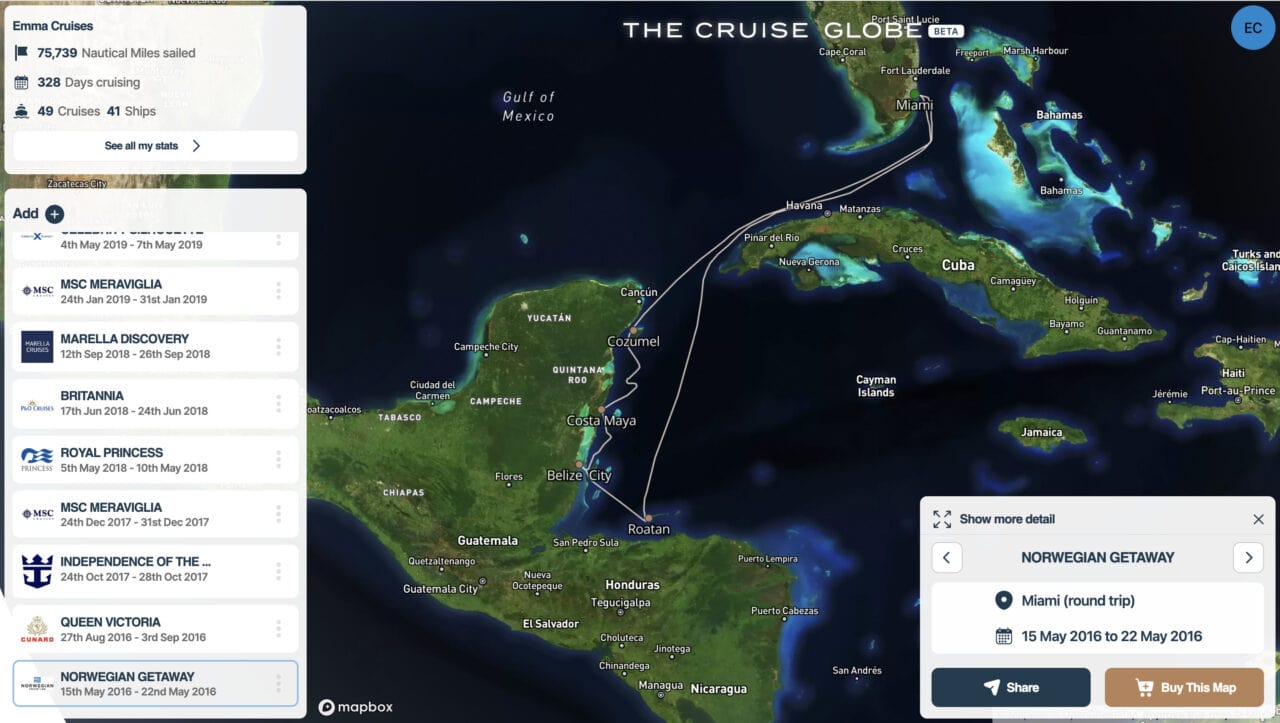
- The Mediterranean
- Sheltered seas have less chance of rough weather. Of course, you can get bad weather anytime, but I often choose out-of-season sailings in the Med and have been lucky enough never to encounter any really bad weather.
- You can visit many countries in a week, with relatively short sailing distances between amazing ports like Barcelona and Rome.
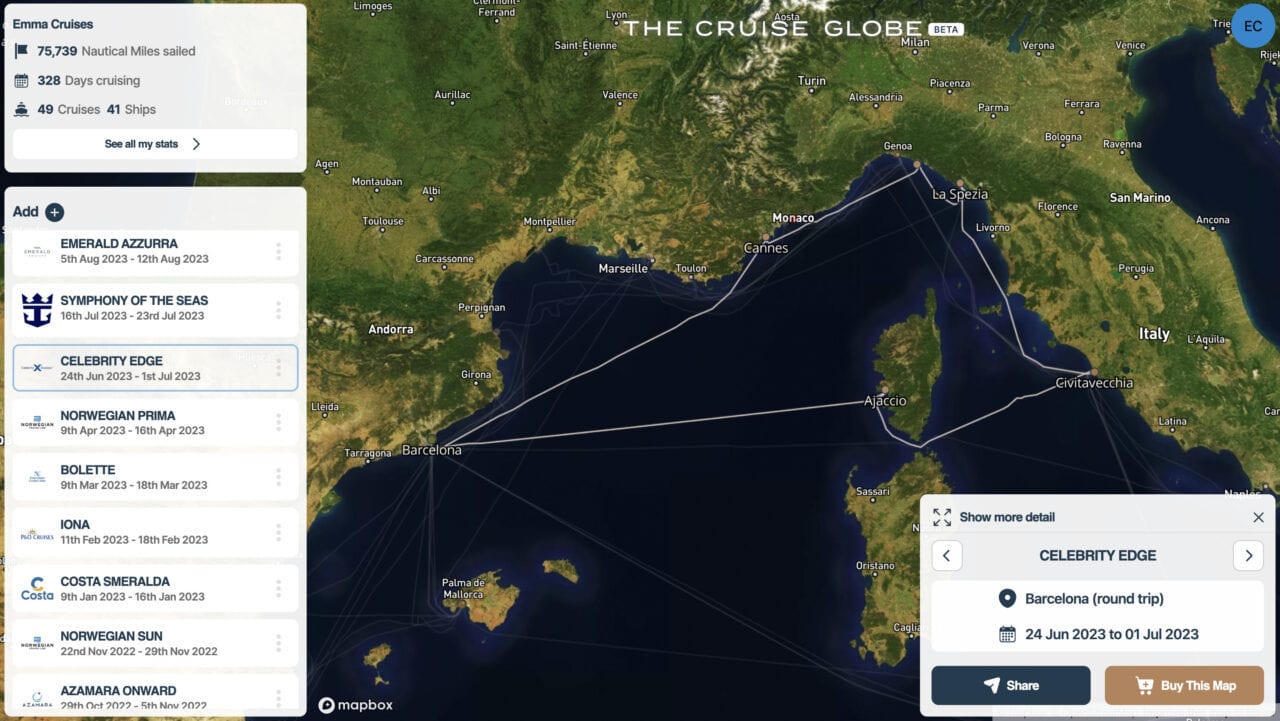
When I took a winter sailing in the Mediterranean on Azamara Onward, the Captain changed the cruise’s itinerary to avoid sailing to Corsica. High seas were forecast – so we visited Genoa in Italy instead.
Captains have the discretion to change routes when they deem it necessary to avoid bad weather.
Find out more about that wonderful cruise on Azamara Onward here.
- The Norwegian Fjords
- The majority of Norwegian Fjords cruises are a week long and visit towns and fjords at the southern end of the Norwegian Coast. Cruises that are longer and sail up to the North of Norway often experience worse weather.
- If you sail in and out of the fjords, you may get calmer seas because the fjords are sheltered.
- The scenery is stunning and breathtaking, and sailing along between the steep edges of the fjords is an amazing sight.
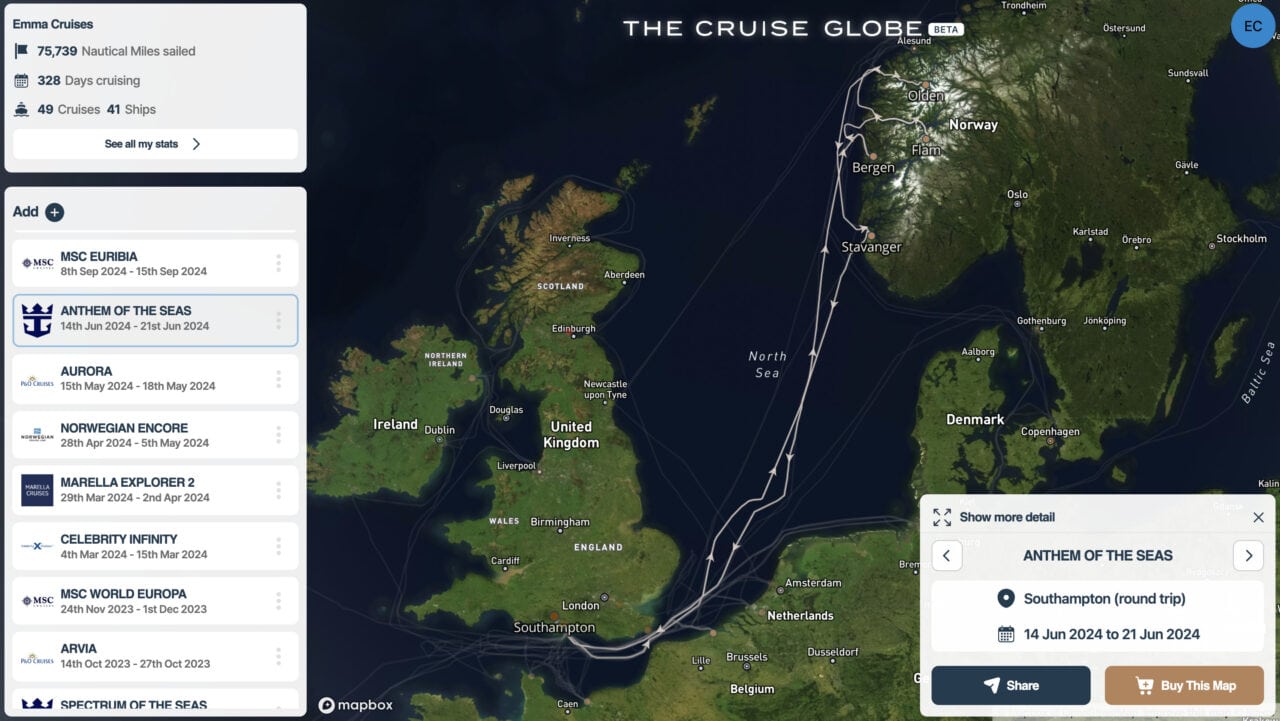
- Be aware, though, that if you are sailing from the UK, you need to cross the North Sea to reach Norway. This can sometimes be rough!
- Avoid sailing in the winter months!
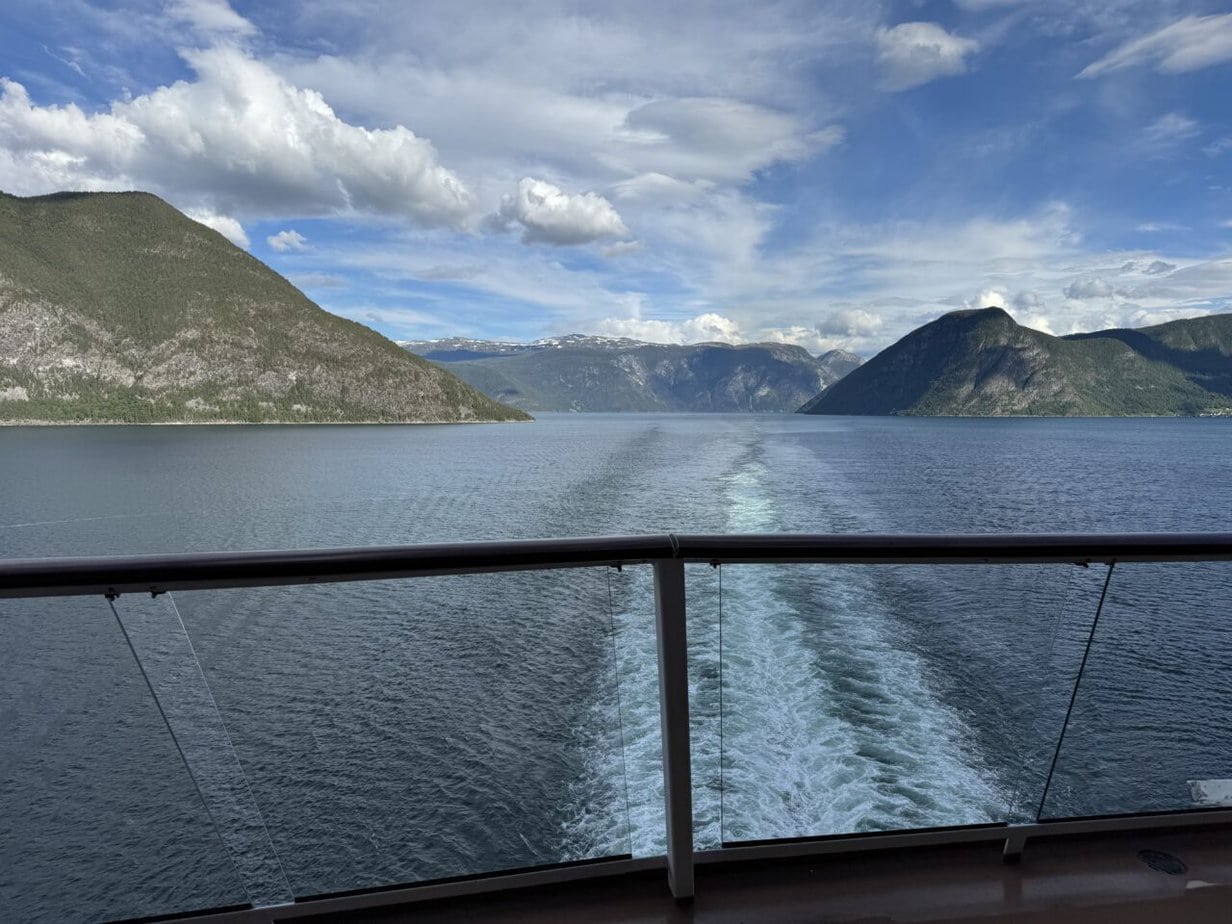
If you are taking a Norwegian Fjords cruise and suffer from seasickness, you may be better to choose a cruise that starts in, or close to Norway to avoid sailing across the North Sea.
- Alaska (Inside Passage)
- Alaska offers sheltered waterways with minimal open-ocean sailing.
- You can see Incredible wildlife and glacier views as you sail.
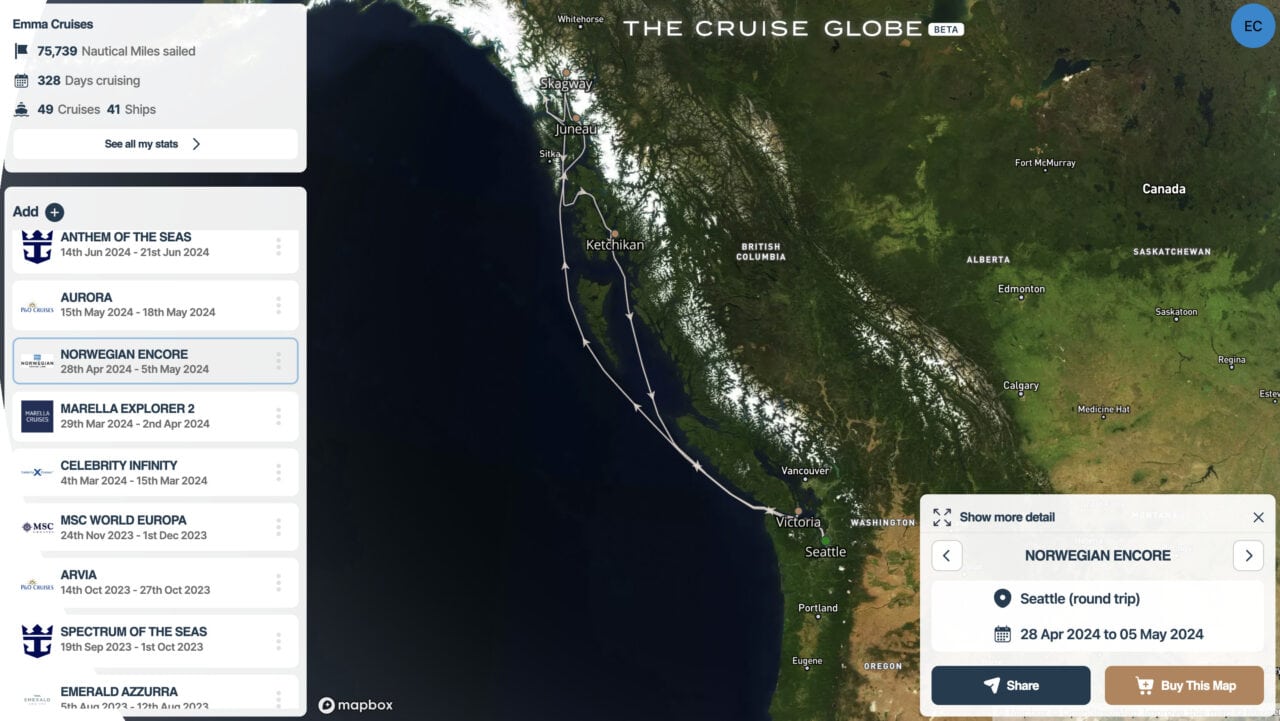
Find out about my latest Alaska sailing below. We saw some amazing sights!
The Worst Cruise Destinations for Seasick-Prone Travellers
As a travel-sick cruiser, these are some of the places I would think twice about sailing to. Some I would consider in the summer months, but certainly not out of season…
These regions may have rougher seas and unpredictable weather, making them challenging for those prone to seasickness.
- Antarctica
- The infamous Drake Passage is one of the roughest seas in the world. I have never sailed to Antarctica and would be wary of doing so!
- While the destination is stunning, the journey there is apparently a major challenge.
- The Arctic Circle
- Open-ocean crossings combined with unpredictable weather make this a seasickness hotspot.
- There is limited shelter from rough seas due to the remote location.
- I sailed up to the top of Norway, into the Article Circle and we had some very rough weather.
I made the mistake of sailing into the Arctic Circle at the top of Norway in February
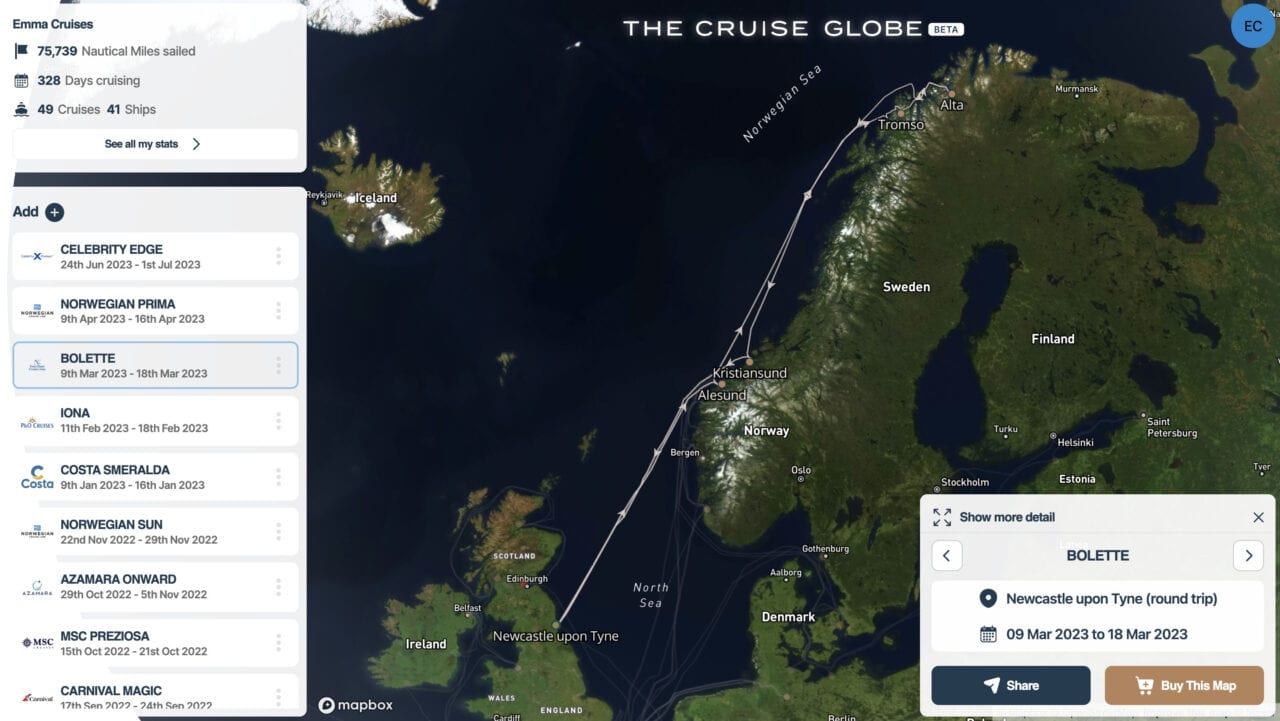
The cruise was called “In Search of the Northern Lights.” I sailed across the North Sea, and I have never felt so seasick in my life! I was on a smaller, older ship. Find out all about that here:
- Transatlantic Crossings
- Long stretches of open ocean often lead to rough waters, especially in the North Atlantic.
- You will be at sea for at least seven days, possibly eight. If you feel seasick, it is relentless, day after day.
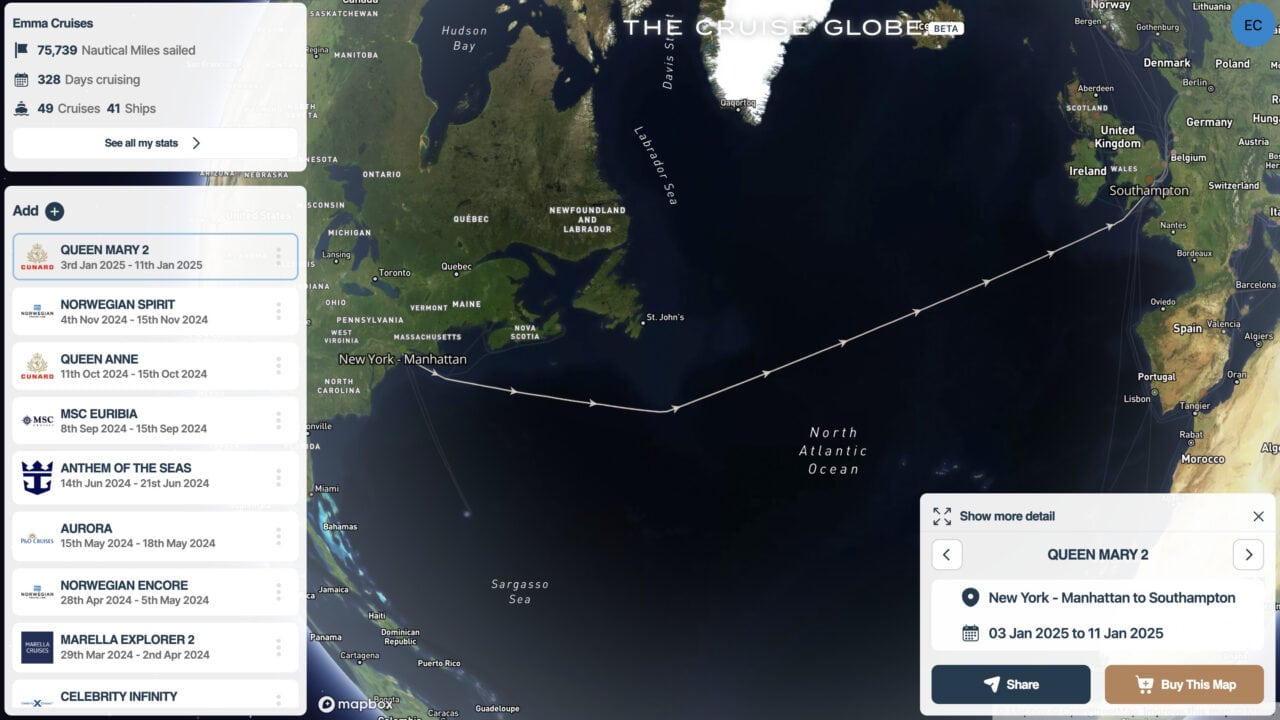
- There are no port stops, so it is not as if you can tell yourself you will feel better tomorrow as you can get off!
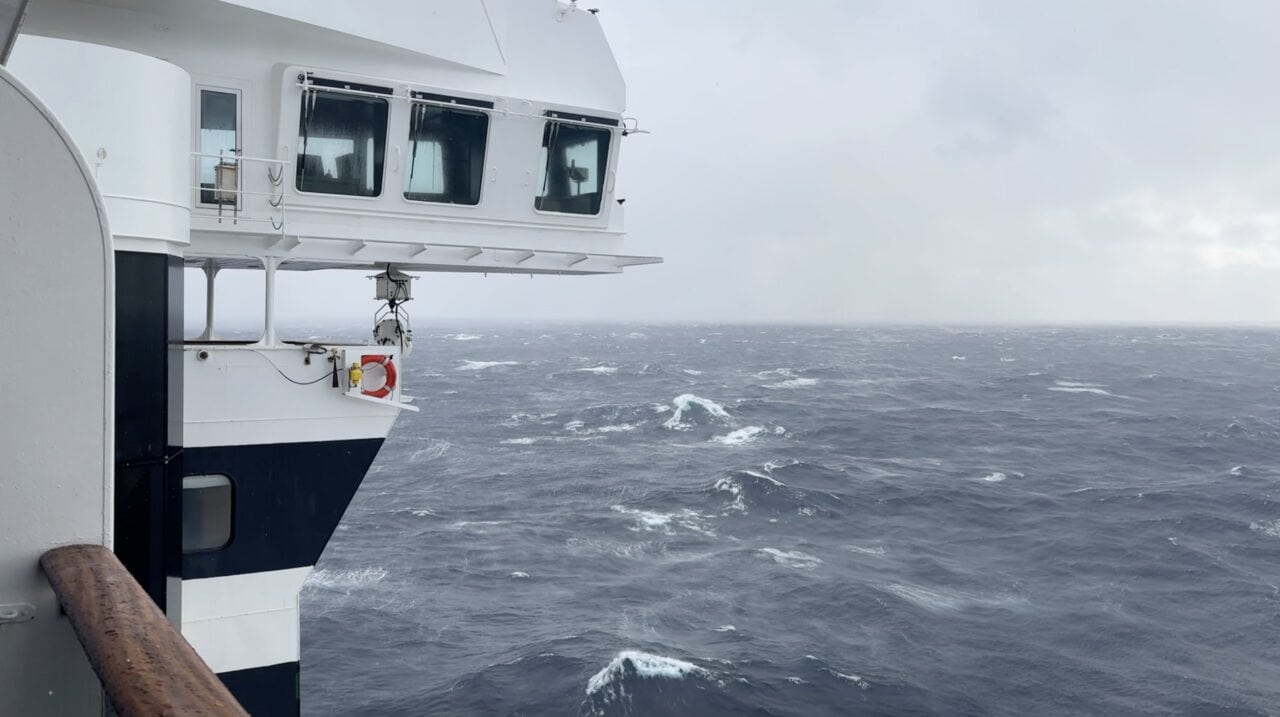
- The Bay Of Biscay
- If you are sailing from the UK to the Canary Islands or the Mediterranean, you have to say through the notorious Bay of Biscay.
- You can experience storms here at any time of the year, but they are worse during the winter months.
- You may be better off taking a fly-cruise instead of sailing from the UK if you are prone to Seasickness.
Find out more about the Bay of Biscay here:
Cruising Through The Bay Of Biscay: What to Expect (Real Experiences)
I took a Christmas sailing to The Canary Islands on P&O’s smaller, older ship, Ventura. We encountered winter storms and missed ports. Find out more about that here:
Tips for Seasick-Prone Travellers
There are many practical things you can do to prevent and treat seasickness.
This ranges from avoiding certain foods to taking medication or wearing seasickness bands.
For all my best hints and tips, read this article next:
13 Actionable Tips to Prevent and Treat Seasickness on a Cruise
Carefully Pick Your Cabin Location
The location of your cabin on the ship will have a significant effect on how seasick you might feel.
This was brought into sharp focus on my recent Transatlantic crossing on Queen Mary 2.
I had a cabin that was centrally located on deck 6. My parents were “upgraded” to a balcony cabin right up on deck 11.
When we hit rough seas, their cabin felt the movement very badly and they were kept awake by the ships bow crashing into the waves, and the vibration, pitching and rolling that came with it.
To find out more about that, watch this video next:
Find out more about the importance of cabin location here:
What is The Best Cabin Location on a Cruise For Avoiding Seasickness? (I’ve Tried Them All!)
Choose A Newer Ship
If you have a choice, pick a newer, bigger ship.
Newer, bigger ships will be more stable at sea. They have stabilisers to reduce the movement you feel when the weather gets rough.
I sailed through the Bay of Biscay on P&O’s largest and newest ship, Arvia. Even though we had some rough weather, she handled it remarkably well and I didn’t feel at all seasick.
The cruise was very eventful, with a lost lifeboat, a medical evacuation and a change of itinerary. Find out more here:
Compare that to my earlier experience on the smaller, older ship Ventura where I travelled a similar route, and felt seasick, you will see that the ship you sail on makes a huge amount of difference!
Avoid Schedules With Lots of Sea Days
If you think you are likely to feel seasick, then it would be wise to pick a port-intensive itinerary.
On many cruises, you will visit a different port every day, and there will be little time spent actually sailing, so you are unlikely to have the opportunity to feel ill.
Avoid itineraries where you will be sailing for a number of days to reach your destination. Certainly avoid transatlantic voyages and repositioning cruises where you are sailing for days at a time.
Take my word for it, it is no fun feeling ill for days at a time, and knowing that you can’t get off the ship and feel better!
Before You Go
Find out why cruise ships rarely travel at full speed here:
Cruise Ships Can Travel at 30 MPH, Here’s Why They Rarely Do
Find out the best cruise length for first-time cruises here:
The Best Cruise Length for First-Timers (And Why It Matters)
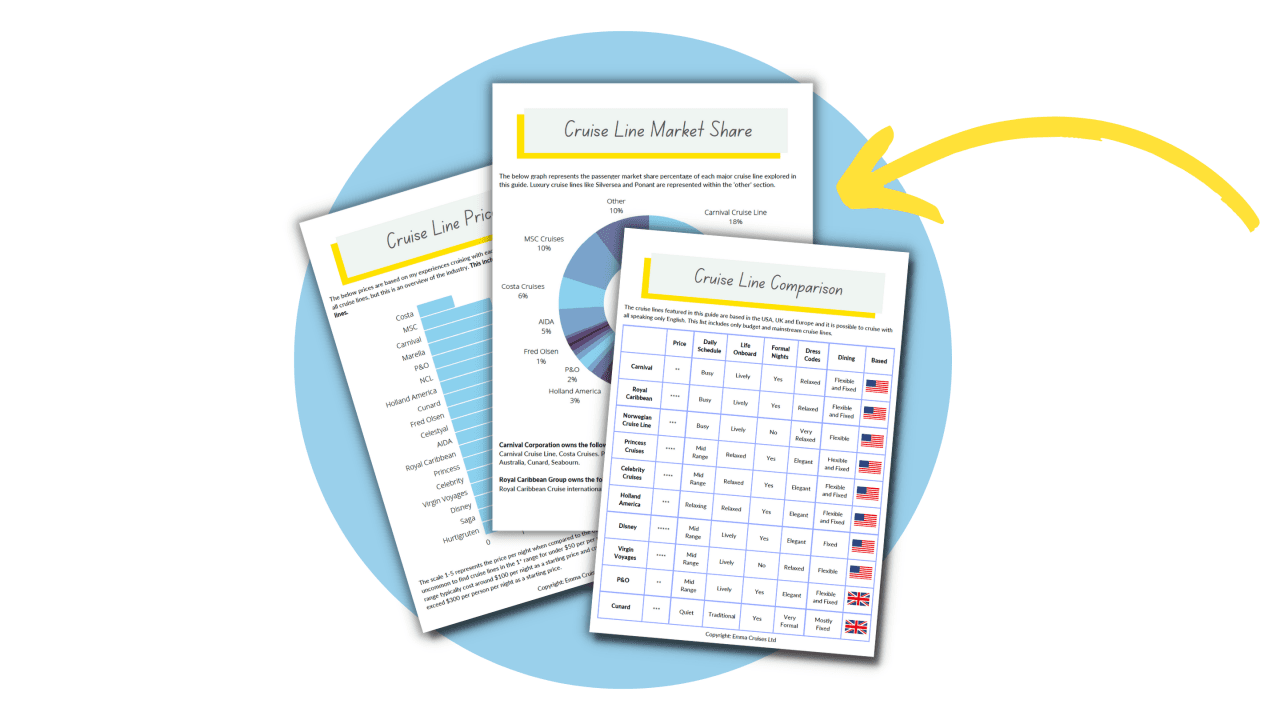
Free Insiders Cruise Line Guide
Ever wondered how the mainstream cruise lines compare? Cruise lines won’t tell you this, but I will.
This FREE guide shows you everything you need to know to find your perfect cruise line.
Whenever I take a cruise I order a print of my trip. It uses the real satellite data from the cruise and is always a great conversation starter!
I'm building an impressive collection...
Code EMMACRUISES will get you 10% off

